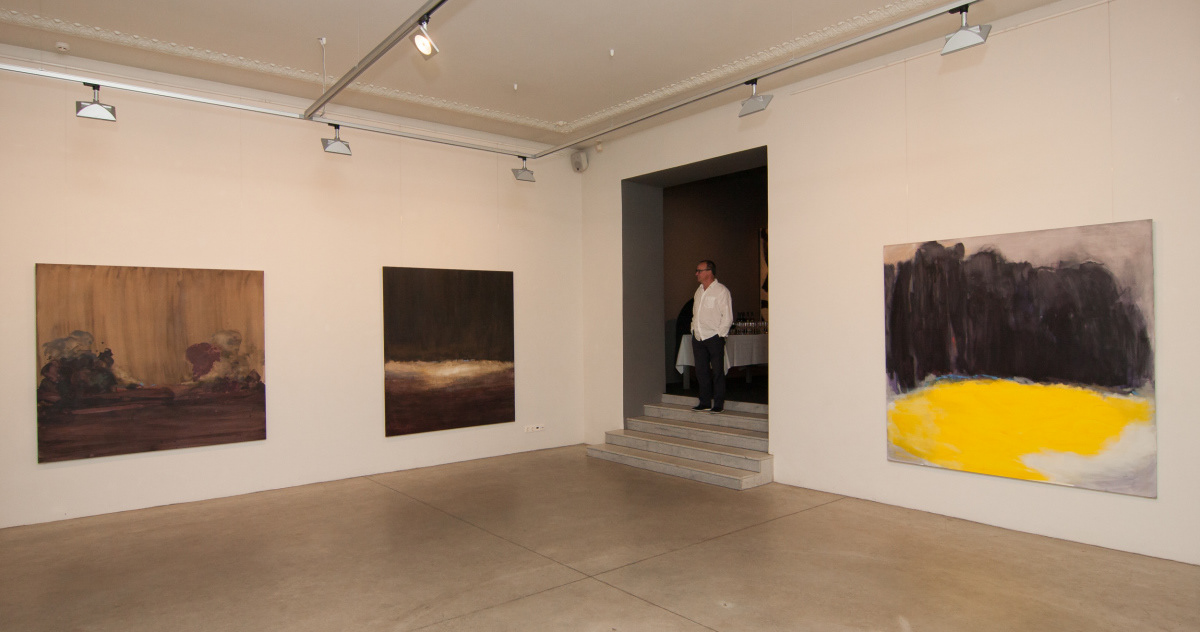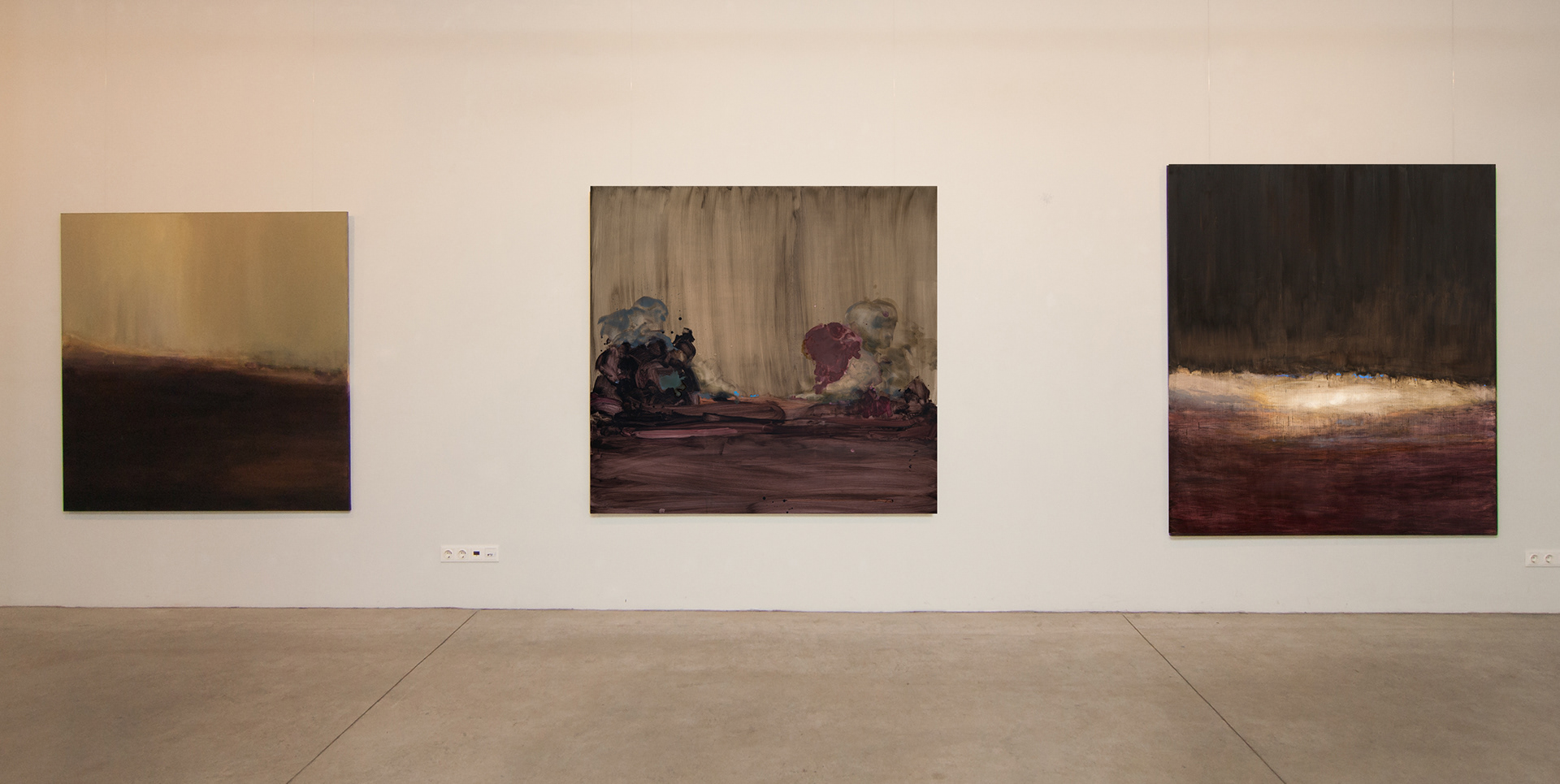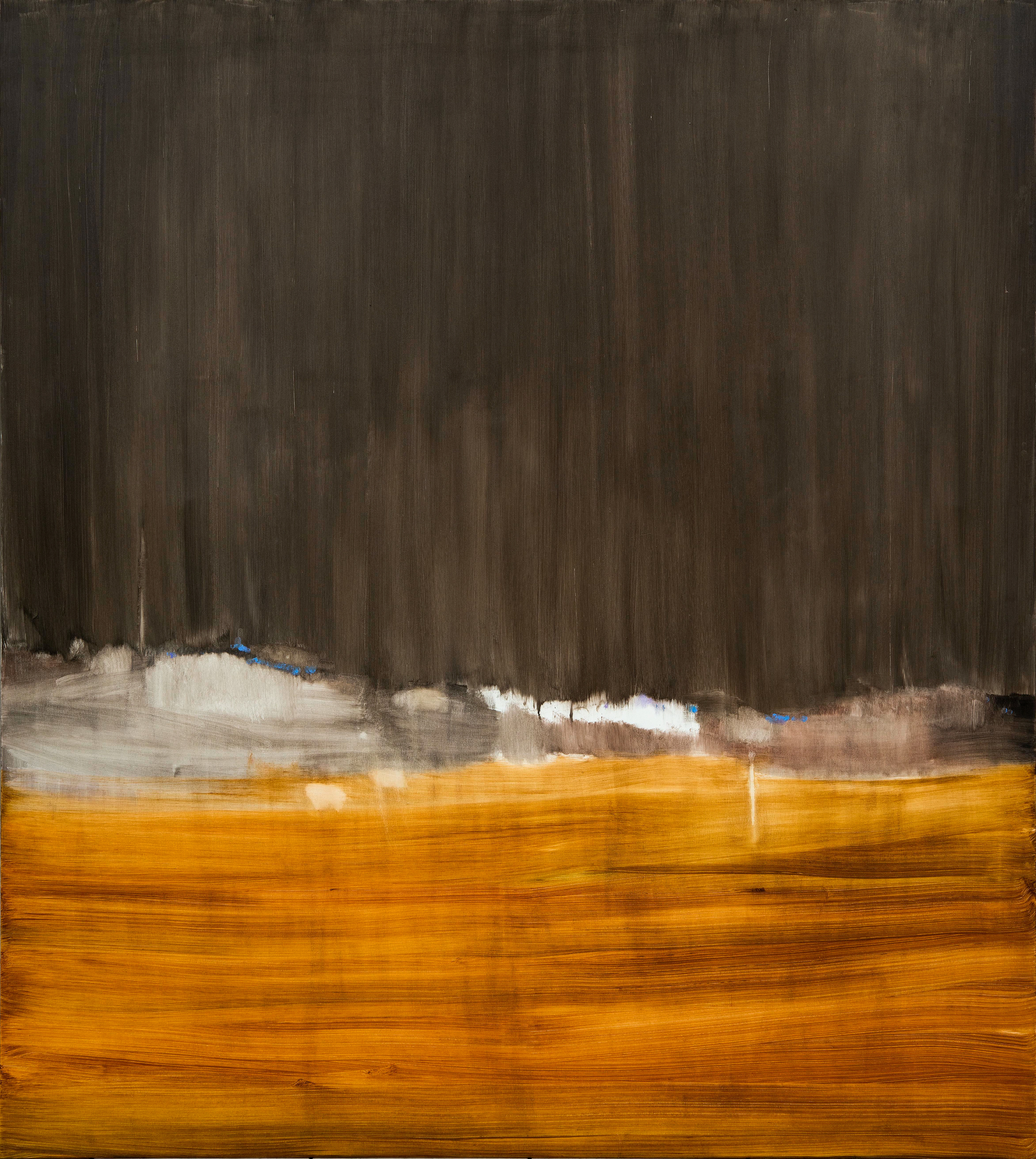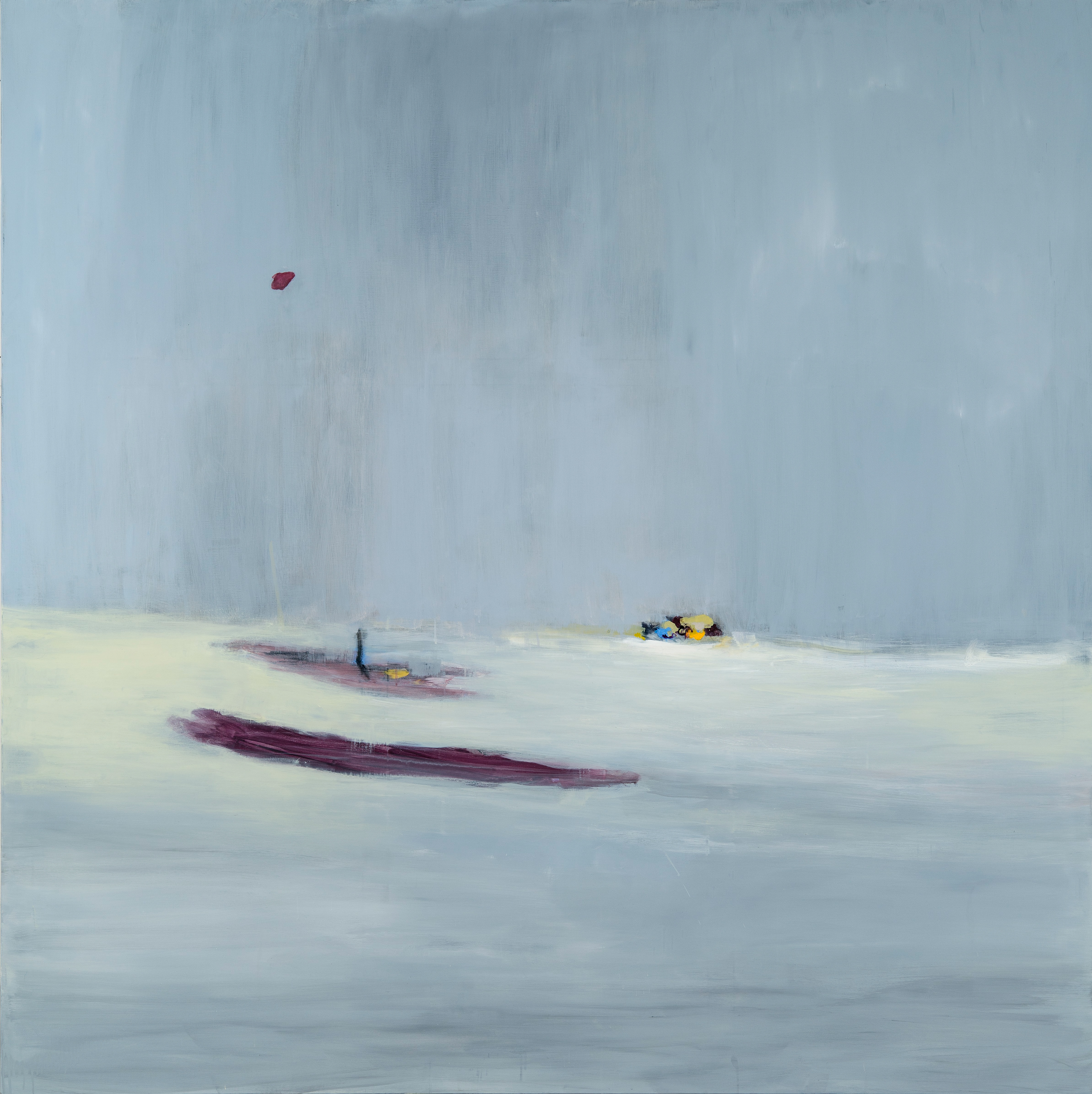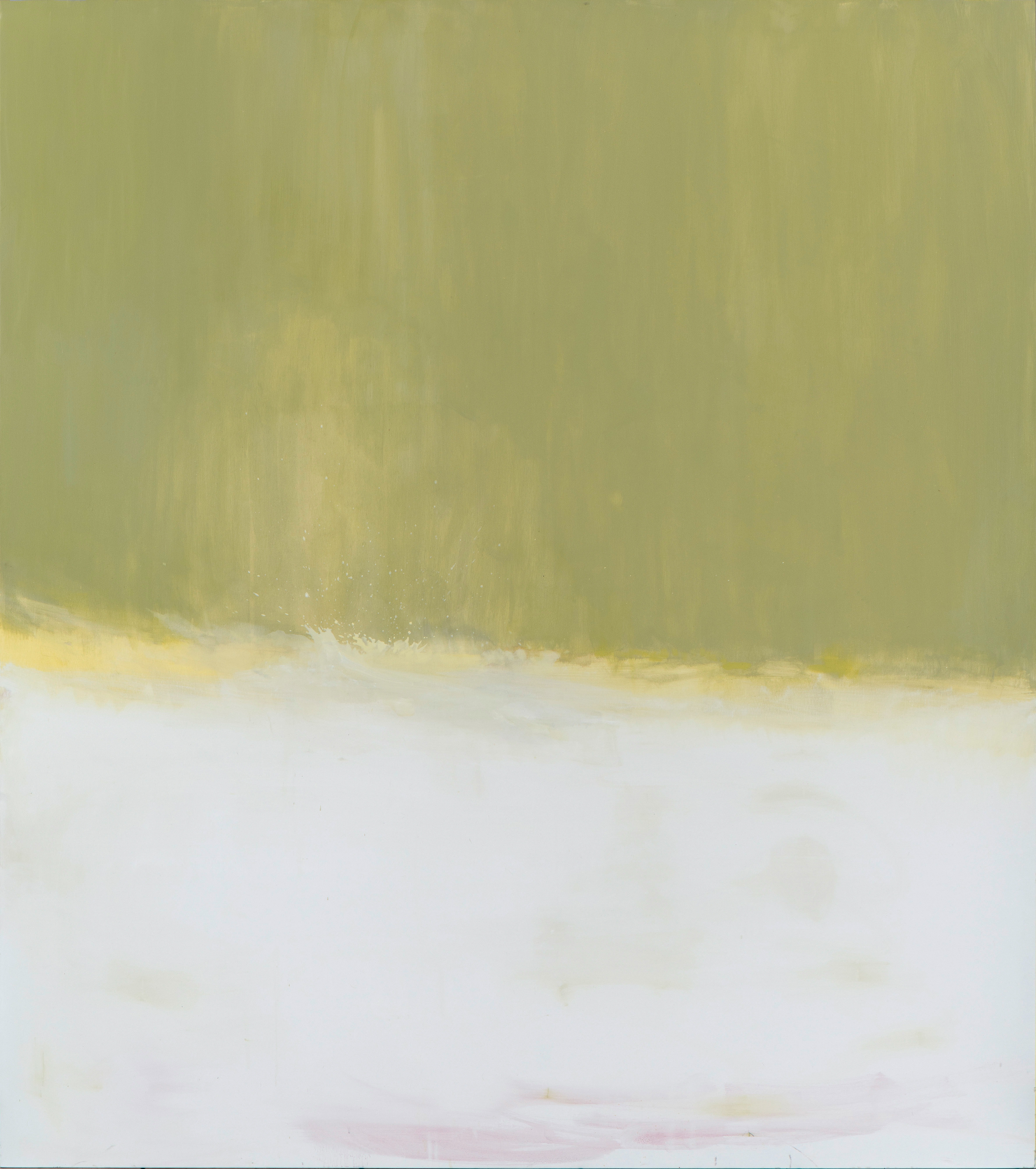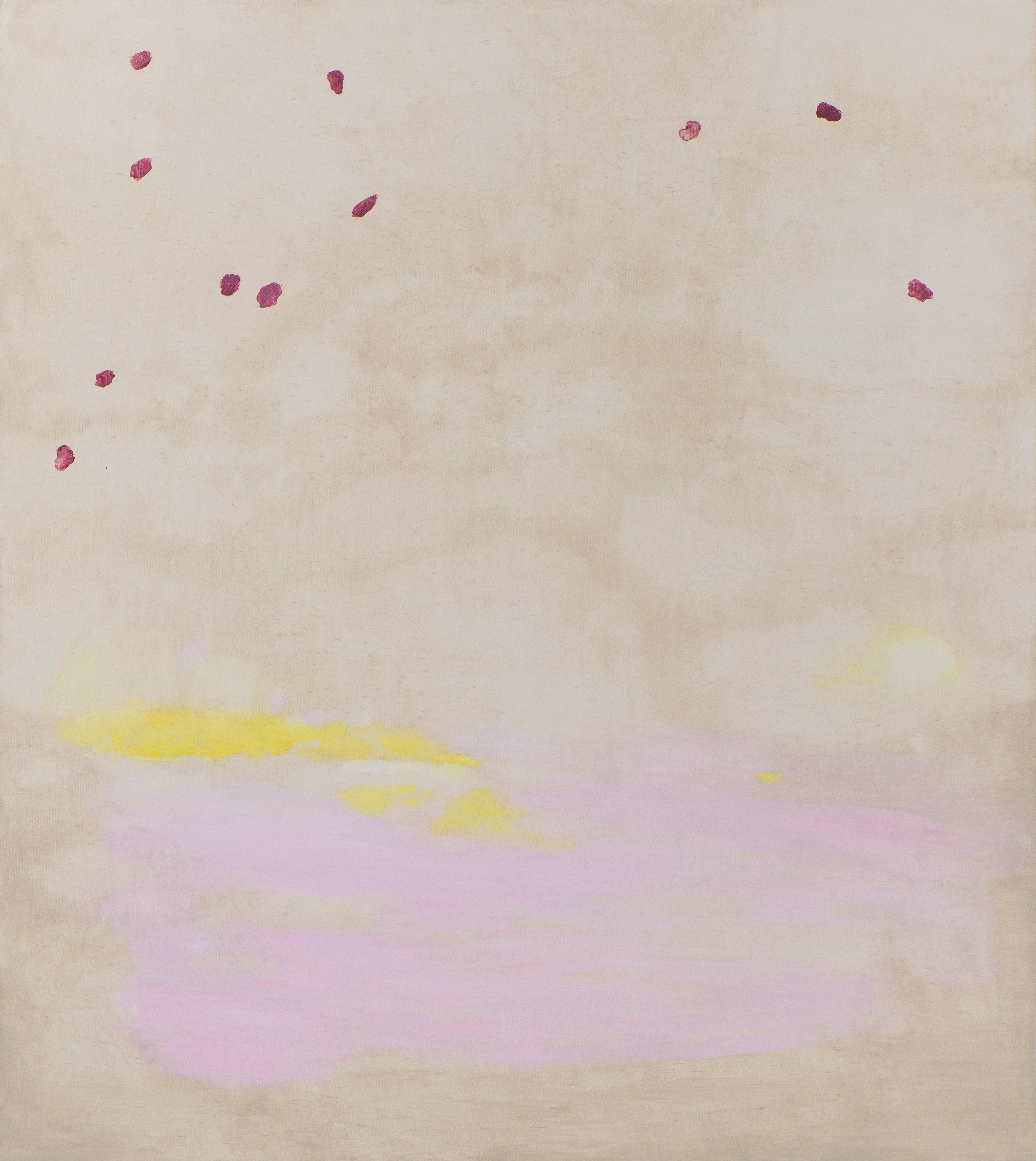13.02.2015 - 12.04.2015 Daugavpils Mark Rothko Art Centre, curator: Inga Šteimane
30.07.2015-25.08.2025, galerija MākslaXO, Riga.
“The horizontal that divides the surface into two is not in fact a line but a join or hinge. it hovers just a little below the level of our own eyes, corresponding with our line of sight, as if whatever we might think of as a horizon is not something out in a landscape so much as inside our eyes. it is what holds a picture together because it is what conjoins it with us, like a spirit-level that registers not only our presence but also our precarious equilibrium in front of the paintings.”1
The composition of paintings by the young artist Paula Zariņa bears some resemblance to the late works by Mark Rothko, which no longer have painted forms, but there is only a “join or hinge” as described by Briony Fer. Though, unlike Rothko’s works, Paula Zariņa’s pictures are unmistakably landscape-oriented, the transformation of the horizon line into a join and thereby into the center of drama creates a similar emotional experience: the intensity of the horizon becomes the main object. Though Paula Zariņa’s works are colorful and in some of them colors are bright and vivid, it is just in the places, where land and atmosphere fields relatively join, that the illusion about energetic concentration emerges. This has some optical explanation. For example, the seeming (visible, but non-existent) reflections which the two near-by colors impart to each other. Consequently, the tension, that can be optically explained, is created when the horizontal and vertical brush patterns meet at the line of the horizon. On the whole, however, the impression is inexplicably suggesting. The lightness and whipped fullness of the form make even the minimalistic plot meaningful. and the artist herself turns to the explanation of the content, saying that she paints illusions about landscape: “Those are magical moments, when in a split of second i see something that is very clear before my eyes until the moment i wink my eyes, and this apprehension of immeasurability, perfection and even happiness has vanished. it is a momentary awareness of fulfilment which vanishes equally momentarily.”2
The new works by Paula Zariņa are named “awarenesses”, and each picture has got one awareness – one magic moment. it is difficult to draw a boundary line between the mystical aspect of the content pointed out by the author and a picture itself at the moment of its emergence in the imagination, at the moment of memories, in conviction that “it should be just like that”. When painter Peter Doig, one of the most individual landscape painters of the present, is asked whether landscape is a metaphor of what is going on in the head, he agrees that it is a good way how to think about painting a picture, since the image becomes credible, if it belongs to the author (in a way, you have to own an image in your head)3. But how can we understand what is going on in the head? and how can those magic momentsof being, which Paula Zariņa is searching for in order to paint, or using the terminology of the outstanding metaphysician Gilles Deleuze, to create one’s own temporal-spatial blocks, one’s own percepts and affects, be understood in a split of second? a possible answer to these questions given by Gilles Deleuze and Felix Guattari themselves is: “Through having reached the percept as “the sacred source,” through having seen Life in the living or the Living in the lived, the novelist or painter returns breathless and with bloodshot eyes. They are athletes – [..] but bizarre athletes of the “fasting-artist” type, or the “great swimmer” who does not know how to swim. it is not an organic or muscular athleticism but its inorganic double, “an affective athleticism,” an athleticism of becoming that reveals only forces that are not its own “plastic specter.”4 Paula Zariņa’s “momentary awareness of fulfilment which vanishes equally momentarily” or her “awarenesses” might be such forces that are not artist’s own, but which for a moment, however, is owned by the artist.
1 Rothko: The Late series. Edited by achim Borchardt- Hume, P. 43. London, Tate, 2008. 2 Email by Paula Zariņa to curator 26.01.2015. 3 Peter Doig: No Foreign Lands. Edited by scottish National Gallery, Montreal Museum of Fine arts etc., interview with the artist by angus Cook. Catje Hantz, 2013.
4 Quatation from Deleuze, Felix Guattari QU’EsT-CE QUE La PHiLOsOPHiE?. English translation from The Continental aesthetics Reader, edited by Clive Cazeaux. Psychology Press, 2000. P.470.
Inga Šteimane, curator
